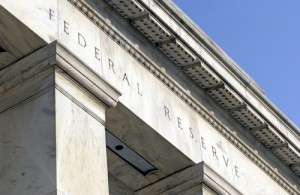It is commonly said by Americans that the harder they work, the further they fall behind.
Well, they’re right.
Since 2000, household median income measured by the Census Bureau has only averaged 1.77 percent growth. In the meantime, the prices of staples like food and energy have been skyrocketing.
Oil is up at an average annual rate of 16.18 percent since. Food is up 6.8 percent a year.
Of course, the Bureau of Labor Statistics consumer price index would have you believe that inflation has only averaged 2.43 percent a year since then. But, even then, wages are not keep up with that measure.
Leaving that aside, what we are witnessing today is the wholesale destruction of the American middle class by inflating them into poverty. Every year that goes by, their purchasing power is diminished.
The cause is clear. Prior to 1971, the prices of things like oil, food, and even gold were relatively stable. But, when Richard Nixon took the U.S. off of the gold standard, leaving the Federal Reserve in command of a fiat currency, that all changed.
From 1947 to 1970, domestic crude oil only averaged 3.3 percent annual price increases. Starting in 1971, the hike has averaged 12.26 percent a year.
Food prices as measured by the Food and Agricultural Organization only has data going back to 1961. But there, the difference holds up. Before 1971, food was increasing at 2.45 percent a year. Afterward, it has grown at 4.77 percent.
Same deal with gold. From 1949 to 1970, it grew an average 0.25 percent a year. Since 1971, it has grown 12.71 percent a year.
Even if one wants to look at consumer price index, prior to 1971 inflation was 2.47 percent a year and after, it has been 4.3 percent annually.
Still not convinced?
The economy prior to 1971 grew nominally at a slower pace, and yet, because inflation was lower, in real terms it grew faster. Real growth from 1946 to 1970 was 3 percent a year. From 1971 onward, just 2.87 percent a year.
Untethering the dollar from gold has led to the largest explosion in debt in human history. From 1946 to 1970, the national debt grew just 1.77 percent a year. Since 1971, the national debt has grown at 9.36 percent annually.
The same story can be told of the credit bubble that nearly took out the global economy when it popped. Prior to 1971, credit outstanding measured by the Federal Reserve — that is, all debts public and private — grew at 6.25 percent a year. Afterward, it grew at 8.81 percent.
By every conceivable measure, the American people are being crushed under wave after wave of price increases while their wages are flat.
So, the next time you travel to the grocery store and the gas station and wonder why you are getting gouged; now you know why. You can thank Nixon’s folly that has left the Fed to undermine the dollar and, in the process, every American’s standard of living.
Robert Romano is the senior editor of Americans for Limited Government.







